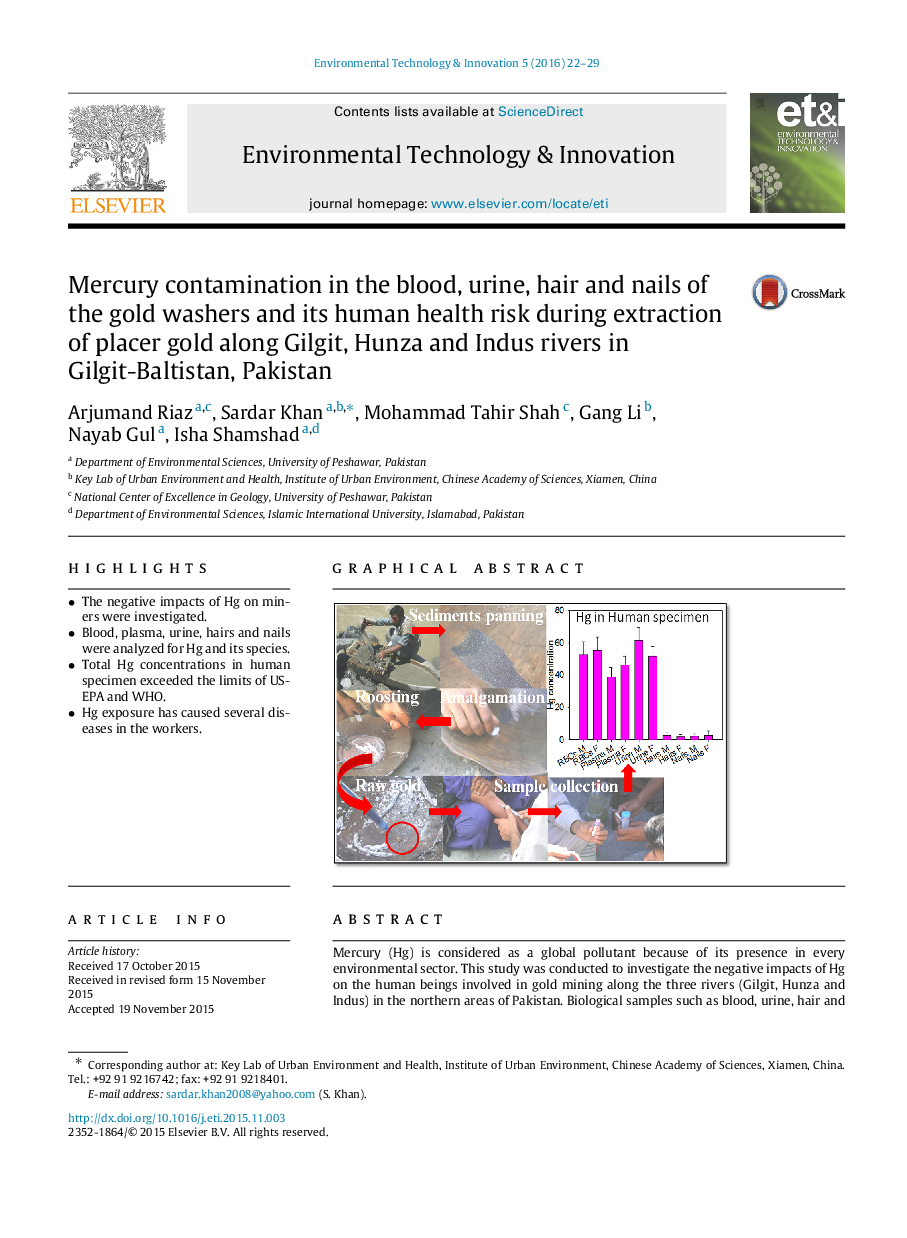| کد مقاله | کد نشریه | سال انتشار | مقاله انگلیسی | نسخه تمام متن |
|---|---|---|---|---|
| 4428191 | 1619283 | 2016 | 8 صفحه PDF | دانلود رایگان |
• The negative impacts of Hg on miners were investigated.
• Blood, plasma, urine, hairs and nails were analyzed for Hg and its species.
• Total Hg concentrations in human specimen exceeded the limits of US-EPA and WHO.
• Hg exposure has caused several diseases in the workers.
Mercury (Hg) is considered as a global pollutant because of its presence in every environmental sector. This study was conducted to investigate the negative impacts of Hg on the human beings involved in gold mining along the three rivers (Gilgit, Hunza and Indus) in the northern areas of Pakistan. Biological samples such as blood, urine, hair and nails were obtained from the gold miners including men and women and extracted using standard procedure. The final extracts were analyzed for Hg and its species concentrations using atomic absorption spectrophotometer (Perkin Elmer-700) equipped with mercury hydride system (MHS-15). Total Hg concentrations in the blood, plasma, urine, hair and nails of male workers were 41 μg/L, 30.8 μg/L, 49.5 μg/L 0.64 μg/kg and 0.46 μg/kg, respectively, while in female workers were 44.4 μg/L, 36.8 μg/L, 41.5 μg/L, 1.1 μg/kg and 0.97 μg/kg, respectively. The results indicated that Hg in all (100%) samples exceeded the permissible limit set by US Environmental Protection Agency, (USEPA, 1997) and World Health Organization, (WHO, 2003). Being a highly toxic metal, Hg exposure has caused diseases in the workers such as inhalation problem, belly and neck pain, skin burn, stunted growth in children, teeth, heart, respiratory, kidney, joints and skin problems.
Figure optionsDownload as PowerPoint slide
Journal: Environmental Technology & Innovation - Volume 5, April 2016, Pages 22–29
